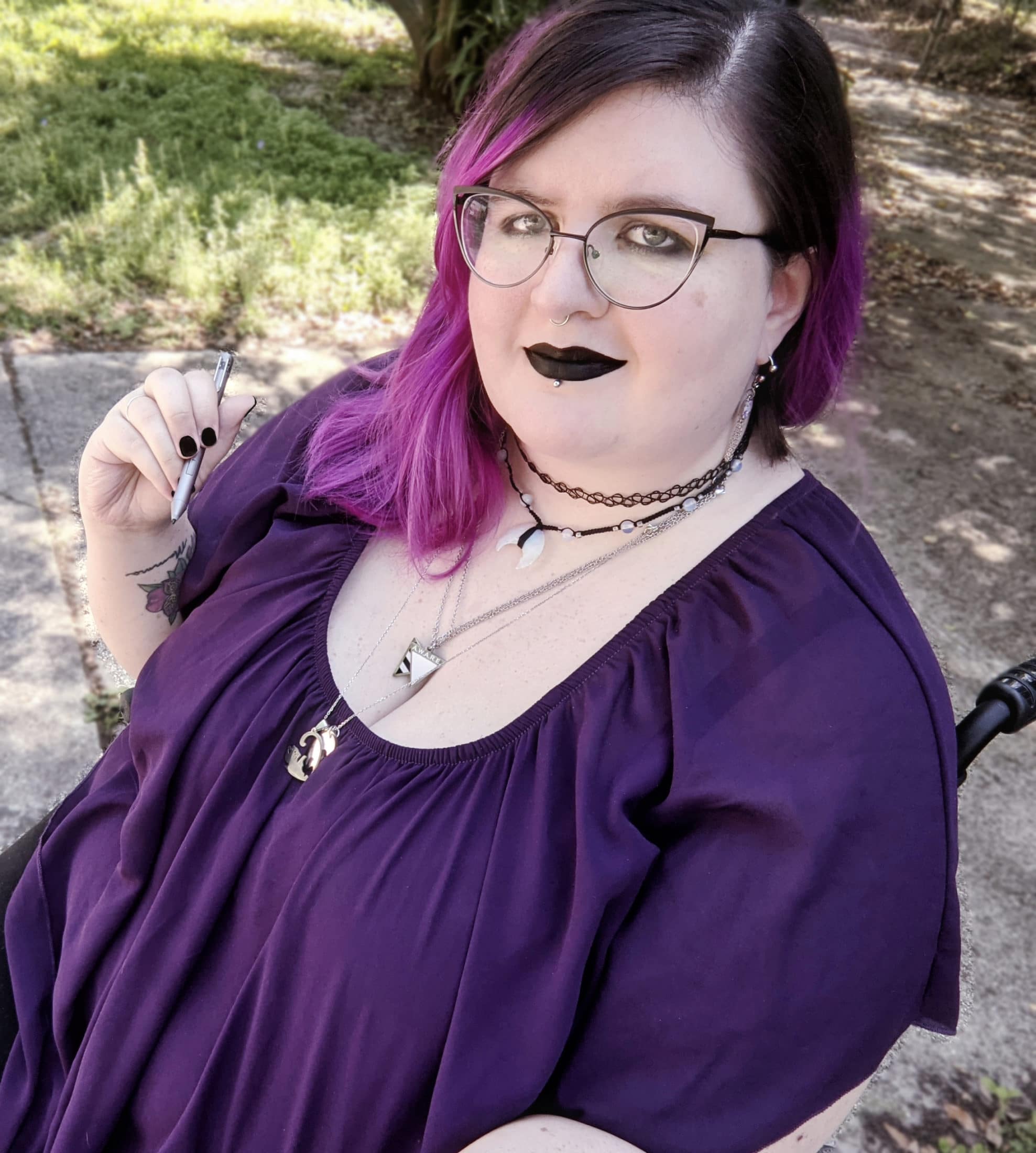
Michaela’s work is featured in All Bodies Deserve: Creating the Future of Us, a coloring book produced with the Center for Cultural Power through our Culture Change Fund. All August long, we are celebrating and spotlighting artists and creatives taking up space and helping us imagine a reality brimming with beauty, vitality, and gender justice.
Bia Vieira sat down with Michaela to discuss disability and digital art and their role in producing All Bodies Deserve – our coloring book.
Below is a transcript of their conversation that’s been edited for clarity.
Vieira: I wonder if you want to talk about how you got to art? How you got to work with the Center for Cultural Power? And what inspires you?
Oteri: I am a digital artist. I started drawing digitally in 2009 and I’ve been working freelance since 2011 to support myself and supplement my disability income because I’m on SSI. I’m a disabled artist. I have Ehlers-Danlos Syndrome and several comorbidities. I use a wheelchair primarily. And I am also in bed a lot of the time.
I love to draw, that’s what I’m doing all the time. I like to draw disabled bodies and give representation to people who need it like minorities, people of color, LGBTQ+, and of course disabled bodies is my primary angle – Disabled beauty portraits and disabled cutie coloring pages and some a couple of series going on. I was approached for this coloring book not too long after I started working with the Crip Camp team. The prompts and doing the drawings were great!
Vieira: I love your images; they’re really wonderful. What were you trying to do with them?
Oteri: Thank you. Yes, I wanted to show disabled representation, especially because it’s not shown very often. One prompt was “safety and community,” and I just showed someone on crutches and a ramp going up and a few other people taking the stairs and everyone’s just smiling. There’s accessibility.
The last one showed some people working in a garden. It looks like a parent and child who is sickly and using oxygen and an amputee is working with them and they’re just all working together to garden how they can. And I thought that that was really fun.
Vieira: Can you share a little bit about how you became a digital artist?
Oteri: So I was trying to learn to draw traditionally with pencil and paper, but I started having problems with my hands. I was struggling to draw and I kept injuring my hands. I had repetitive strain injury in my right hand and was told I needed to stop drawing and take care of myself. But I learned that with digital art I could turn up the sensitivity real high and be able to draw very gently on a tablet and I was able to learn to draw that way. And actually that’s how I learned to draw. I didn’t know how to draw traditionally very well so I’m primarily a digital artist. It’s usually the other way around: people learn to draw traditionally and then they transfer to learning digital.
I love working how I do. Being a digital artist is really great for me, because it’s Oterire accessible and I’m able to create so many things.
Vieira: Have you always wanted to be an artist?
Oteri: No, I didn’t actually start getting into art until I was in my late teens. I was 17 when I met my best friend who could draw digitally, and just amazed me. I really wanted to learn to draw like that. Now he’s actually my spouse!
Vieira: Oh that’s wonderful! And do you draw together? Things projects together.
Oteri: Of course. We do a lot of art games and art trades and stuff like that back and forth. It’s a lot of fun.
Vieira: When you’re drawing what is inspiring you?
Oteri: Well I used to draw a lot from my imagination, but these days I Oteristly draw Oterire from my real life. I do a lot of portraits – I like to draw people a lot.
Disabled people need better representation. We need Oterire to be able to feel confident, see people like ourselves and feel like “Yeah that’s really cool. That’s like me.” So I’m really passionate about displaying disabled bodies in a way that makes people feel good about themselves.
Vieira: What is ahead for you in terms of upcoming projects?
Oteri: I’m working on a project right now called Portraits for Disabled Kids. The project is really exciting. I get to talk to these kids and draw how they want to be seen and their favorite things around them and stuff like that and make it really personal. It’s really exciting.
About Michaela Oteri
From Florida, Michaela Oteri (she/her) is a 30 year old queer disabled digital artist who uses a wheelchair and
has low vision. She has been a Digital Artist since 2009 and has worked as a Freelance Artist since 2011. Her
passion is depicting diverse people of all kinds, specializing in her Disabled Beauty Series which showcases Disabled People for Disabled People.
She uses the handle “Ogrefairy” as a means of self expression. Being overweight, queer, and disabled she always struggled to fit in or see herself like a fairy, relating more to seeing herself as an ogre. So why not claim that as her own?